Classic Commentaries and Studies on Ezra, Nehemiah, and Esther (18 vols.)
Digital Logos Edition
Overview
The Classic Commentaries and Studies on Ezra, Nehemiah, and Esther (18 vols.) offers some of the most significant classic studies on the exile and redemption of Israel. With notable authors such as Henry Linton, C. F. Keil, F. Delitzsch, and J. Davies, Classic Commentaries and Studies on Ezra, Nehemiah, and Esther offers over 4,000 pages of interpretation, observations, translations, contextual history, and practical application. The eighteen volumes contained in
This collection is essential for students, scholars, pastors, historians, teachers of the Bible, or anyone studying the books of Ezra, Nehemiah, and Esther. With Logos Bible Software, this collection is completely searchable, with passages of Scripture appearing on mouse-over, as well as being linked to the Greek and Latin texts and English translations in your library. This makes these texts more powerful and easier to access than ever before for scholarly work or personal Bible study. With the advanced search features of Logos Bible Software, you can perform powerful searches by topic or Scripture reference—finding, for example, every mention of “King,” or “Nehemiah 8:1.”
This title is included in the following collections
You can save when you purchase this product as part of a collection.
Logos 8 Collector's Edition Le...
$11,399.99$11,399.99Logos 9 Collector's Edition Le...
$11,399.99$11,399.99Logos 8 Ultimate Legacy Librar...
$21,749.99$21,749.99Logos 9 Ultimate Legacy Librar...
$24,999.99$24,999.99

- Concise, historical studies on Ezra, Nehemiah, and Esther
- Over 4,000 pages of notable scholarship on Ezra, Nehemiah, and Esther
- Completely searchable and linked to your preferred Bible translation and other books in your library
- Title: Classic Commentaries and Studies on Ezra, Nehemiah, and Esther
- Volumes: 18
- Pages: 4,167
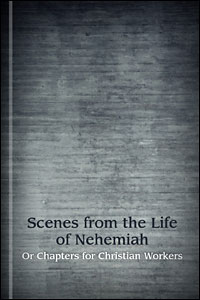
Although brief in nature, this commentary on Nehemiah from the Wesleyan Conference of 1874 offers exegetical studies on the call, mission, and journeys of the prophet Nehemiah.
The incidents in connection with the life of Nehemiah are graphically sketched in these pages, and valuable suggestions are given to stimulate the hearts and strengthen the hands of Christian workers.
—The Primitive Methodist Magazine
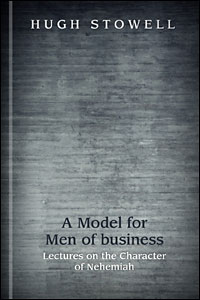
Taken from a series of fourteen lectures, Hugh Stowell offers comprehensive studies on the principles, purpose, and extent of Nehemiah's message. Examining Nehemiah's character as an archetype for zealous reverence, Stowell walks through the character traits displayed throughout the text.
We hail every wise and earnest effort to bring religious truth into effectual contact with secular life: and deeming Mr. Stowell's discourses likely to be very useful in this service, we wish for them a wide circulation.
—The Eclectic Review
In these lectures we have the evangelical spirit, the earnest feeling, and the clear, direct, and popular styles of expression characteristic of the author. Great practical questions come up in the course of these discussions . . . the author's dogmatic method of dealing with them is sounds and healthful.
—The British Quarterly Review
Hugh Stowell (1799–1865) was educated at St. Edmund Hall, Oxford before being ordained in 1823. Stowell went on to become Rector of Christ Church, Salford and Chaplain to the Bishop of Manchester.
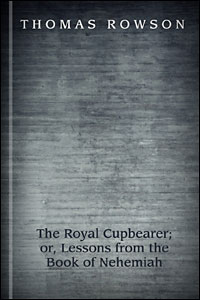
Examining Nehemiah's role as cupbearer to the King, Thomas Rowson provides comprehensive studies on the character and actions of Nehemiah. Rowson ties in useful anecdotes and similes in order to illustrate key points in the text.
Thomas Rowson was educated at Hackney College before being ordained Pastor of the Church at Sandwich, Kent in 1845. Rowson deceased in 1848.
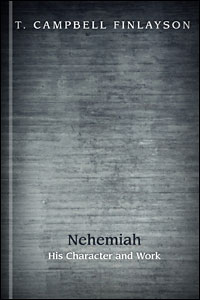
Examining the progression of the book of Nehemiah in light of historical context, T. Campbell Finlayson concisely provides exposition of the text.
Well fitted to arouse or to deepen interest in an important but little studies period of Jewish history.
—The Religions of the Ancient World
T. Campbell Finlayson (1836–1893) was the congregational minister at United Reformed Church, Cambridge and later at Rushholme, Manchester. Finlayson received an honorary Doctorate of Divinity in 1891.
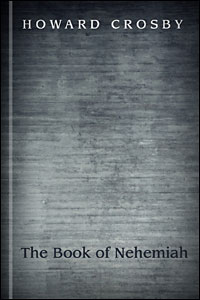
Discoursing on the authorship, origin of the text, and contextual meaning, Howard Crosby offers exegetical studies on the text of Nehemiah. Crosby moves through the text verse-by-verse in order to provide elucidation of the text, as well as semantic and historic meaning.
Howard Crosby (1826–1891) was educated at New York University before becoming Pastor of Fourth Avenue Presbyterian Church in New York.
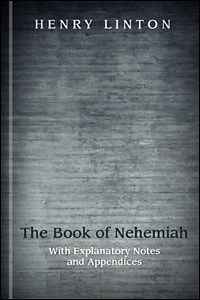
Providing succinct chronological commentary, Henry Linton examines Persian and Jewish history, the return from exile, and progression of Israel's state. Linton provides tables for examination of chronological progression within the Ancient Near East around the dates of the text.
Henry Linton (1879–1958) was educated at Durham University before going on to become the Vice Principal of the CMS Training College in Oyo—as well as the Principal of Stuart Memorial College. Linton was ordained as the Bishop of Persia in 1919.

In George Rawlinson's Ezra and Nehemiah, the author provides exegetical analysis of the character of Ezra and Nehemiah, the reign of the Persians over Israel, the rebuilding of the temple, and the renewal of Jerusalem. Focusing on the character traits of these two key prophets, Rawlinson offers exposition of the historical context in which the text is embodied.
George Rawlinson (1812–1902) was educated at Trinity College, Oxford before becoming Professor of Ancient History at Exeter College. Rawlinson went on to accept the offices of Canon of Canterbury and Rector of All Hallows, Lombard Street.
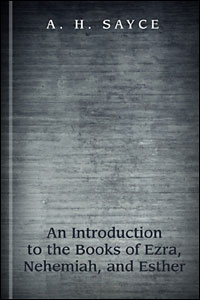
Concisely examining the books of Ezra, Nehemiah, and Esther, A. H. Sayce draws upon biblical and non-biblical sources to offer contexualized studies for in-depth clarification and elucidation.
All the light thrown upon these historical books by recent archaeological discoveries, more especially by inscriptions, is here made use of, as more fully in the author's 'Fresh Light from the Ancient Monuments.' to which he refers his readers. The illustrative value of this little book is very great.
—The British Quarterly Review
A. H. Sayce (1846–1933) was educated at Queen's College, Oxford before becoming Professor of Philogy at the University of Oxford. Sayce later went on to become the Chair of Assyriology. A. H. Sayce is notable for his many works on Assyriology including An Assyrian Grammar, Lectures upon the Assyrian Language, Assyria: Its Princes, Priests, and People, and Social Life Among the Assyrians and Babylonians.
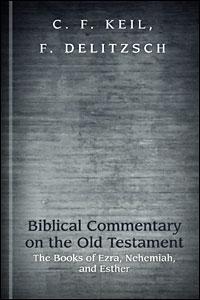
Discoursing on the composition, character, canonicity, and content of the texts, this commentary by C. F. Keil and Franz Delitzsch offers clear exegesis of Ezra, Nehemiah, and Esther. Taking into account extra-biblical sources, the authors provide exegetical framework in which to examine the historical and cultural context of the text.
This is one of the series of Commentaries by Keil and Delitzsch, the translation of which has made an important addition to the means of studying the Old Testament for those who are not acquainted with the German language. The works on this portion of the Bible, which are of real service, are so few in number, that the appearance of this my be welcomed.
—New Englander and Yale Review
C. F. Keil (1807–1888) was educated at the University of Dorpat and the University of Berlin. Keil went on to become Professor of Old Testament and New Testament Exegesis at the University of Dorpat

Franz Delitzsch (1813–1890) was Professor of Theology at the University of Rostock from 1846–1850, and University of Erlangen from 1851–1867, and University of Leipzig from 1867–1890. Delitzsch is notable for his translation of the New Testament.
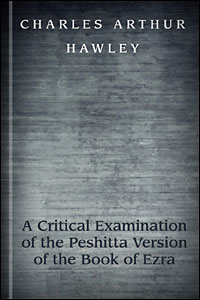
Comparing both Hebrew and Syriac translations based from the Peshitta, Charles Arthur Hawley examines the semantic variation within the text. Setting the original foundation as the Masoretic Text (MT), Hawley notes the literal yet sometimes paraphrased text of the Peshitta.
Charles Arthur Hawley, born in 1889, was educated at the University of Iowa and Union Theological Seminary. He soon after became Professor of Biblical Literature at the International Young Men's Christian Association College in Springfield, Massachusetts. Hawley went on to become Associate Professor at Mount Holyoke College.
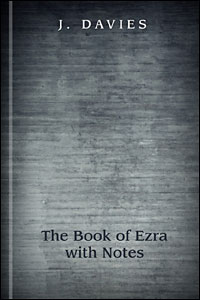
In James Davies' succinct The Book of Ezra with Notes, the author provides concise annotation and exegetical analysis of the text. Moving chapter-by-chapter, Davies offers explanatory notes and elucidation of the text.
James Davies (1826–1916) was educated at Repton School and Trinity College, Cambridge. Davies became Curate of St. Anne's, Limehouse and later at St. Mark's, Whitechapel. Davies was notable for his extensive authorship and collaborative translations including that of Homer's Illiad and Plato's Republic.

Expounding on the text of Ezra, Charles C. Torrey examines varying semantic translations, structure of the text, historical formulation, and the chronological order of the text.
This is a very learned, original, and able book, the kind of book that only a great scholar could produce . . .
—The Homiletic Review
Charles C. Torrey (1863–1956) was Professor of Semitic Languages at Andover Theological Seminary from 1892–1900. Torrey later went on to become Professor of Semitic Languages at Yale University from 1900–1932.
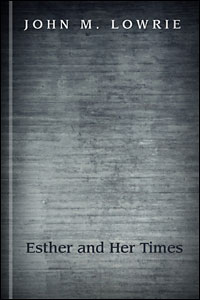
Split into a series of twelve lectures, John M. Lowrie exegetically examines the events recorded in the Book of Esther within historical context.
A series of instructive and interesting lectures on a portion of the word of God, which has received less attention from common Christians that it otherwise would, owing to the absence of helps like this, for the due understanding and application of its teachings.
—The Biblical Repertory and Princeton Review
John M. Lowrie (1817–1867) was educated at Princeton Theological Seminary before being ordained in 1843. Lowrie went on to become Pastor of First Presbyterian Church at Fort Ayne, Indiana.
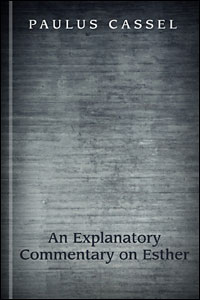
Providing both historical background and cultural context, Paulus Cassel exegetically examines the text in order to provide practical explanation and elucidation. Offering clarification on semantic expression, Cassel explores the homiletic application of the text.
This commentary is rich in materials gathered from ancient books, modern discoveries, the writings of travelers, philological science, and every other source of information likely to elucidate the instructuve book of which it treats. We know of no better commentary on the Book of Esther than this scholarly work.
—Methodist Review
Paulus Cassel (1821–1890) was educated at the University of Schweidnitz, before becoming editor of Erfurter Zeitung. Cassel was later elected to the Prussian Parliament in 1866. Cassel eventually used his political influence to become a widely renowned missionary and preacher.
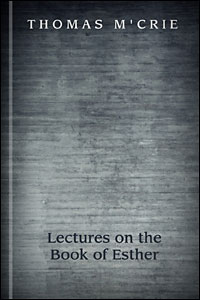
Arranged as a series of eighteen lectures, Thomas M'Crie provides chronological exposition of the text. Within his lectures, M'Crie explores authorship, historical context, and the progression of Israel's exile.
Thomas M'Crie (1772–1835) was educated at the University of Edinburgh before studying under Archiblad Bruce. M'Crie was ordained in 1796 before spending the remainder of his life in ministry.
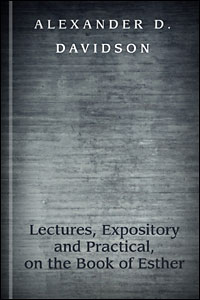
Arranged as a series of fifteen lectures, Alexander D. Davidson provides thorough studies on the Book of Esther. Covering historical background, cultural context, and semantic examination, Davidson exegetically moves through the book of Esther.
This is a work worthy of the author's reputation as preacher. It is well written, quiet in tone, with a high degree of strength and self-possession, as of one who is thoroughly aquainted with his subject, sound in doctrine, and eminently practical.
—The Aberdeen Herald
An excellent popular exposition.
—Watchmen
Alexander D. Davidson was Minister of Free West Church in Aberdeen, Scotland from 1832–1872. Davidson was ordained in 1830 and died in 1872.
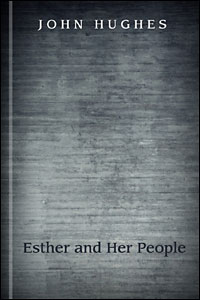
Originally delivered as a series of ten sermons at St. Michael's Chapel in Aberystwyth, Wales, John Hughes offers historical context and practical exegeis on the book of Esther. Each sermon covers the sequential book of Esther.
John Hughes (1796–1860) was ordained in 1821 before becoming a Methodist Minister in Wales. Hughes wrote many works including A History of Welsh Calvinistic Methodism, Mirror of Prophecy, and Catechism of Scripture History.
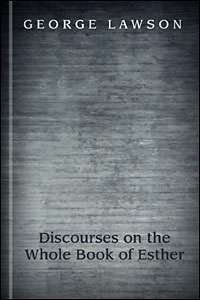
Expounding the book of Esther through historical and semantic deduction, George Lawson moves through the text verse-by-verse to provide clarification of the book. Organized as a series of sixteen discourses, this commentary thoroughly examines the text and provides practical application of key principles.
George Lawson (1749–1820) was educated at the University of Edinburgh before becoming Minister of the Associate Congregation in Selkirk, Scotland.
Reviews
2 ratings

Larry Proffitt (I
11/13/2013
Eduardo Vega
9/25/2013